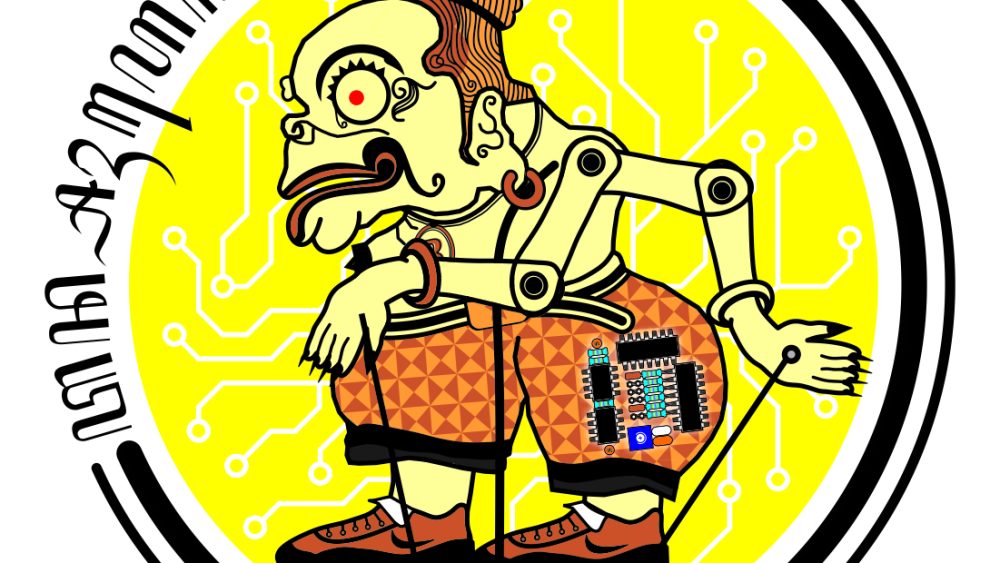We commissioned Lintang Raditya, an experimental musician based in Yogyakarta, to design the logo for the research project “Java-Futurism”. We commissioned Lintang because it was he who originally coined the term “java-futurism” five years ago during a visit to Yogyakarta, where we first met him. He told us about the time he visited Transmediale in Berlin and was introduced to the term afro-futurism. “When I heard the term”, Lintang told, “I though in Java we have a kind of futurism, too! A java-futurism”. We asked Lintang to design a logo that fit what he meant by the term. The logo he produced for us, Lintang calls “the Bagong Rapper”. Here is how Lintang explains the meaning of his Bagong rapper logo:
“In Javanese puppet mythology, Bagong materialised from shadow of Semar, the guardian spirit and quintessential god of Java. Bagong is a childish character. He is funny and straightforward but also sharp and critical. The yellow background with the white lines are symbols of gold and light, which themselves are indexes of the Golden Era (Jaman Mas). But the utopian future of Jaman Mas is always threatened by the forces of chaos and destruction that accompany its chronological opposite, the Mad Era (Jaman Edan). It is between the Golden Era and the Mad Era that we can find the future. The circle around the Bagong figure symbolises time, eternity, and the universe. The text in old Javanese writing surrounding Bagong says: Tansah eling land waspada – Javanese for “Always remember and be alert”. Javanese philosophy teaches us that in life we must remember the past in order to move into the future. We have to be alert towards the signs of misfortune in the future, and we can recognise them only because they were given to us already in the past”
Lintang’s explanation is a succinct example of we call “java-futurism”: the future – whether existential, aesthetic or political – is in significant ways pre-ordained in the past but in distorted and hidden forms. Shaping the future – in life, in art, or in politics – therefore requires discerning the distorted and hidden forms of the future in the past. Facing the future, whether to create something new or to avoid disaster, requires in other words a particular alertness to the past.
It is the aesthetic expressions of this kind of temporality in contemporary Indonesian electronic and noise music that our research project studies. We do so in an effort to discern what it might tell us about artistic practice more generally, including answering the question: How might an understanding of an aesthetic “otherwise” help decolonize Western music and art history?

